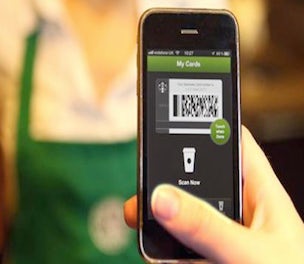How to get user experience right across platforms
Brands are stepping up their use of digital platforms to offer users even more sophisticated levels of engagement and interactivity.
Above: Thomson created an online hub for its new ‘Ogre’ ad campaign
Mounting pressure on print circulations and TV viewing figures has forced media brands to look again at the digital user experience. In an effort to grab the maximum audience share, newspapers, magazines and broadcasters are all seeking to perfect how they present information online.
At the end of last year, ESI Media unveiled a new app for the London Evening Standard freesheet and announced similar plans for its other title, The Independent. The two newspapers had very different fortunes last year, with the Standard’s readership rising 9 per cent while the paid-for Independent’s circulation dropped 16 per cent.
The apps are part of a co-ordinated strategy to improve the digital presence of both publications – supporting the growth of one while shoring up the dwindling print presence of the other.
The Independent app is due to launch soon and will share many features with the Standard app in terms of overall user experience. This includes the prominent promotion of social media sharing, commenting, photo galleries, video, interactive crosswords and games, and weather reports that can be customised depending on the user’s location. In addition to this enhanced functionality and interactivity, ESI says the apps will provide “a consistent, harmonious experience” across multiple devices.
For example, registered users can save their details and preferences centrally across a variety of devices. The apps also combine interactive experiences with replica PDF editions of the papers to cater for people who still want the benefits of a ‘linear’ print reading experience.
“These apps allow consumers to read our products in the way they want to,” says Zach Leonard, the publications’ managing director of digital, “and make it easy for advertisers to reach them in new, engaging ways.”
Putting the user experience first
Numerous media brands have sought to refresh their digital presence recently. In the premium magazine market, for example, Hearst Magazines has launched Esquire Weekly, an iPad-only companion to the men’s lifestyle magazine.
The app is part of a wider digital revamp for the Esquire brand after its circulation fell 14 per cent in the first half of 2013, compared to the previous six months. Hearst also revamped Esquire’s website last year and an Esquire Weekly for smartphones is in the works.
Esquire Weekly’s editor, Dan Davies, says the app plays to the strengths of tablet devices without resorting to gimmicks, by putting the user experience first. It is presented as a functional guide to the week ahead, featuring exclusive content across categories such as tech, style and sport. “We don’t do interactivity for the sake of it,” he adds. “There’s no point having a cover star that winks at you if it doesn’t provide the reader with any added value.”
There’s no point having a cover star who winks at you if it doesn’t provide the reader with any added value
Instead, Esquire Weekly aims to combine quality editorial with levels of engagement deeper than any print publication can offer. Davies cites an article on corrupt police in cinema that features a scrolling, illustrated line-up of suspects, with various film characters displayed.
“As well as being a nice visual aspect in itself, you can tap on each of those cops and go through to a profile with a video clip,” he explains. “So it’s about making the interactivity feel organic within the design of the whole product, so that you can take people deeper into a story.”
Click to buy
The app provides a further layer of functionality by enabling users to click through to external sites selling products such as clothes, music or gadgets featured in the digital magazine.
According to Davies, the initial consumer reaction has been encouraging. “Downloads have been healthy and are slowly growing,” he says. “The digital magazine market is in its infancy but the trends are positive. People are staying in the app for a long time and really engaging with the content.”
While media brands are revamping their digital presence in order to provide a better user experience, a number of other brands are imitating the style of newspapers and magazines as they seek to reshape their business models. Music retailer HMV, for example – which was saved from administration last April – relaunched its website at the end of last year to focus on providing information rather than ecommerce.
The new site reflects HMV’s decision to avoid direct competition with ecommerce players such as Amazon and Play.com. Instead, it is intended to position HMV as a trusted authority on home entertainment news and products that will help to drive people into stores.
Content versus commerce

Visitors to the site cannot buy physical products such as CDs and DVDs, although there is a section for music downloads. The site is primarily given over to original content produced by an internal editorial team, including interviews with film and music stars and previews of upcoming releases.
The website has the feel of a regular magazine, with high-quality images and videos and easy navigation between categories such as film, music and games. However, some commentators have questioned whether HMV’s new online approach will actually encourage people to visit its stores. Certain customers have mocked the retailer’s failure to offer a price list of products online, pointing out that they can no longer compare HMV’S prices with those of its rivals.
Meeting consumers’ diverse needs is vital for brands seeking to display information in a clear and accessible way. The cancer charity Macmillan, for instance, is in the process of overhauling its website to provide a more comprehensive experience to users.
According to the brand’s digital agency, Zone, Macmillan’s biggest user experience challenge is the sheer amount of content on its site. There are more than 3,000 pages covering areas such as medical information, support services for cancer sufferers and information for donors, fundraisers and health professionals.
Personalising the user experience
To gain a greater understanding of the website’s readership, Zone conducted interviews across the full range of users. It found huge variations in terms of the depth of information that people needed and the numerous ways in which people navigated the site.
One of the most glaring problems was the disparity between the information presented on the site and the support services offered. The revamped site, which is due to launch imminently, will tie the two strands together by ensuring that a user is served access to support services every time they land on an information page.
Among the new interactive functions is a tool that helps people work out how they will manage their finances if they have to take time off work following a diagnosis.
Macmillan’s head of digital, Amanda Neylon, says that the brand is focused on providing “simple to use, meaningful, customer-centric digital services to support people”.
Meanwhile Durex – best known for its condoms – has also sought to consolidate a huge amount of information in an attempt to tailor its website experience to individual visitors. Its owner, Reckitt Benckiser, hired creative agency Iris to create a an online hub that would position Durex’s website as a destination for advice and information on sexual wellbeing.
Our online hub gives us the opportunity to tell people how and why a Thomson holiday can be so transformative
The site features more than 100 articles on a range of topics. On entering, users are asked to submit their gender, sexual experience level and desired content category, and in response, the site engine delivers content relevant to that experience. It is frequently updated to ensure the site experience does not become stale.
Beyond websites and apps, brands are increasingly turning to social media in their efforts to engage people.
Last April, for example, the management consulting company Capgemini partnered with the professional social network LinkedIn to launch Content Loop, a microsite delivering business information tailored to the particular role and interests of each visitor.
The system aggregates approximately 50 stories a week from business news sites such as Forbes and VentureBeat and combines these with Capgemini’s own information to provide site visitors with a fresh set of stories every day.

LinkedIn’s technology enables each user to see the stories most relevant to their professional profile and provides them with invitations to connect to Capgemini experts.
According to the consultancy, more than 130,000 followers were added to Capgemini’s company page in the first six months of the initiative. It continues to add 3,000-4,000 followers a week.
Josh Graff, marketing solutions director at LinkedIn EMEA, suggests that the quality of
the user experience on the company page encourages visitors to recommend the site to other business contacts. “Context matters,” he says, “and professionals come to LinkedIn to invest time, not spend time.”
Three Big Challenges
1. Consolidating information
Combining all the relevant information into an effective user experience can be tough. Realising that its message was spread across multiple platforms, Coca-Cola GB began such a process in 2010, hiring digital agency Zone to revamp Coca-Cola.co.uk into a central hub with a consistent editorial tone and easy navigation.
A menu drop-down bar covering areas such as ‘health’ and ‘environment’ was introduced, as was a cleaner design, with interactive elements such as a calorie intake ‘work it out calculator’. Clearer language and simple search terms have made the site more visible to search engines, accounting for 80 per cent of traffic in Q4 of 2013.
2. Being authentic
Seamless and engaging user experiences are vital to a new digital venture, particularly when faced with established competitors.
Last autumn, drinks brand Diageo decided to launch a site about making spirits-based mixed drinks and cocktails. It hired creative agency TMW to create an interactive site – thebar.com – across mobile, tablet and desktop devices.
Harnessing Diageo’s expertise, the site features a simple search function providing access to more than 350 recipes, categorised by type of spirit, social occasion and complexity level. Users can also comment on and share recipes via social media. TMW reports that the UK site had 390,000 total visitors in December, with more than half of the traffic coming from mobile or tablet devices.
3. A consistent experience
Brands often use online hubs and microsites to support ad campaigns. The challenge is to provide an experience that is consistent with the wider campaign and builds on the story behind it.
This month, holiday company Thomson launched a site to complement its MeAgain TV ads, featuring Simon the Ogre. Video content agency Rockabox created the site, presenting a first-person view of Simon’s office to help users understand why he needs a holiday. Interactive functions include his voicemails and family photos.
Thomson marketing and digital director Jeremy Ellis says: “The online campaign hub gives us the opportunity to tell the audience how and why a Thomson holiday can be so transformative.”
Winning move
Media sports brand ESPN faced a dilemma over how to expand its presence in the UK last August. Having lost the TV rights to show Premier League games, the company was forced to downgrade its ESPN ‘goals’ app, which had proven popular among football fans last season.
Working with marketing agency DigitasLBi, the brand developed ESPN UK, a new sports app across iOS and Android devices. The feed-based application pulls content from across ESPN’s range of platforms including cricket, rugby and Formula 1 websites. Users can personalise their own news service within the app right down to the level of specific teams that they want to follow, which means that only content relevant to their interests is displayed.
“Mobiles are by nature very personal devices and sport is a very personal thing,” notes Anil Nair, head of product management at ESPN EMEA. “The app offers a personalised service that is very easy to navigate and come back to. Users just need to tap and hold to select the categories they want in their feed.”






